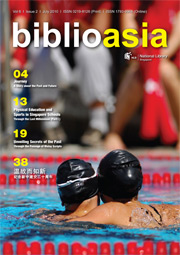Out and about with nothing to read? Here’s five free reads you can pick up from shops, cafes, museums and libraries in Singapore.
—————————————————————————————————–
This is the monthly guide to Singapore’s music and clubbing scene. Since it launched in 1998, JUICE has become an institution of local free street magazines. Each issue features news, reviews, and interviews with local and international musicians. There’s also a fashion spread. But, the perennial favourite has to be the ‘Scene’ section where you can check out who’s been out partying all night! Since June this year, JUICE has also published a special edition for sale at $4 that features extra content and exclusive promotions and offers.
WHERE TO FIND IT
Fashion stores, cafes and restaurants.
—————————————————————————————————–
The granddaddy of free street magazines in Singapore. I-S is a weekly that covers the entertainment and lifestyle scene in Singapore and has been around since 1995. The latest issue comes out every Friday, and is packed with listings of the latest exhibitions, art events, films and theatre productions. There is also a guide on where to eat and party. The soul of the magazine, however, is its features stories and interviews that sometimes cover the most current controversial issues with a cheeky touch. Another favourite is its OB Index, which charts the state of freedom of expression here Where do they get their sense of humour? The answer could be found it the advertisements of its classifieds section.
WHERE TO FIND IT
Most fashion stores, cafes and restaurants.
—————————————————————————————————–
Who says free stuff can’t come without puff? BeMUSE is a quarterly magazine started in 2007 that celebrates heritage (No, not a puff word for history!) with photos and essays about the latest museum exhibitions. It is published by Singapore’s National Heritage Board (NHB), which explains why its articles feature exhibitions from its museums. However, this is more than just a beautifully designed public relations guide – many of the articles are written by the exhibition curators themselves making it almost like attending a curator’s tour!
WHERE TO FIND IT
Museums and hotels.
—————————————————————————————————–
Here’s one for those who don’t like to read: Kult is a quarterly that uses visual arts to explore social issues. Each issue, by the similarly named creative agency, features works from illustrators from all over the world and it has so far covered the themes of truth, artificiality and AIDS. Since the magazine started in 2009, Kult has challenged the notion of magazines by not only having a printed form but also adapting its content to fit an 80’s arcade machine and an interactive online edition. Read my earlier review here.
WHERE TO FIND IT
Design schools and cafes in town.
—————————————————————————————————–
For Singapore history buffs, this one’s for you. This is a quarterly journal of academic articles written by the librarians and the research fellows of the National Library Board. Since it started in 2005, BiblioAsia has published articles on lesser known topics of Singapore’s history — physical education, children literature, Malay scripts — making it an excellent resource for budding researchers. The articles also come with references that you can follow-up on at the library.
WHERE TO FIND IT
National Libraries





